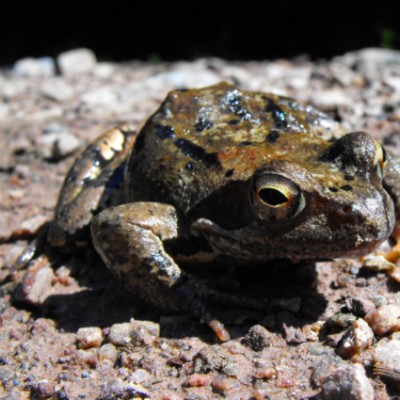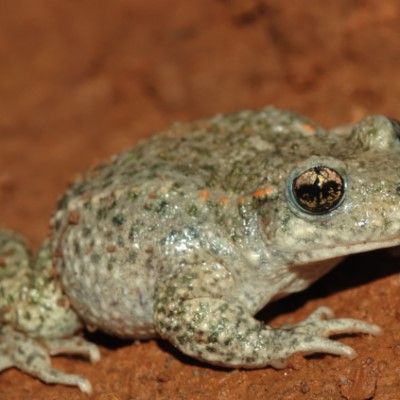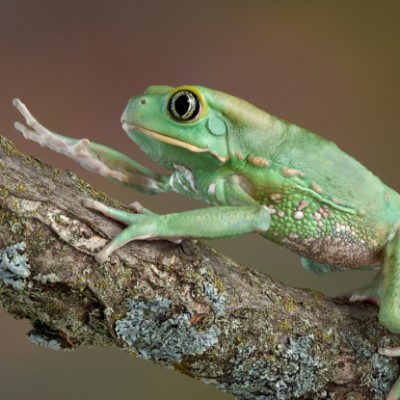Common Reasons for Surrender
These tiny, colorful frogs are rarely surrendered.
Pros
Mantellas come in the plain brown variety as well as the colors of bright fire: reds, oranges, and golds. Add a little flame of blue, bright green, and black, and you have the mantella frog, said to be one of the most beautiful frog species in the world. The mantellas are social creatures and can be kept in groups of six or more. The males wrestle one another but really do not fight with intent to harm one another. The coloring of the poison dart frogs is very similar to mantellas. They are fascinating to watch.
Cons
Mantellas and poison dart frogs must be handled carefully by adults because poisonous toxins may be present in their smooth shiny skin. This frog is uncomfortable with the human hand, which appears to the mantella and poison dart frog to be a predator. These frogs are for display—look but don’t touch.
Diet
The mantellas eat insects, especially small invertebrates such as crickets, which can be sprinkled with a nutrient powder (especially a calcium supplement), found in your pet store, to provide the frog a more well-rounded diet. Like any amphibian, this frog needs water, but he prefers his “watering hole” to be secluded in a dark place. Be sure to change the water regularly. In the wild in Madagascar and South America, these frogs feed on local ants and termites, but many also eat carrots and leafy green vegetables in captivity.
Domesticated mantellas and poison dart frogs should be fed every two to three days. After 15 minutes, remove any leftover crickets.
Exercise
If you provide a tank with humidity and branches and leaves to climb, the mantellas and poison dart frogs will thrive happily and exercise in your tank as much as they would in their natural habitats.
Possible Health Issues
Most mantellas have the same toxins as the poison dart frogs. Like all frogs, they have porous skin that changes with their environment. In fact, a sick frog may possibly indicate a poor environment. Both frogs are generally hardy and the only health issue may be parasites. Parasites can be avoided by purchasing crickets from a store instead of catching them outside. Crickets outside may or may not be laden with parasites.
Housing
Because this frog is so small, a ten-gallon vivarium (tank) is large enough for her home. Mantellas and poison dart frogs need a humid environment with little retreat areas in their vivarium. The ideal flooring is damp moss with wooden branches and “steps” scattered about. It’s important to provide these frogs with water that is almost hidden in a dark place. If you buy male and female, the eggs will likely be hidden under the moss and hatch two to three months after being laid. This frog needs light, so a low wattage bulb or fluorescent light with a timer is recommended for about 12 hours per day. Tank temperatures should range from 72 to 76 degrees. Be sure to mist the tank daily or twice daily (depending on your local climate) as the frogs need the humidity and often like to drink the water droplets more than drinking from the concealed water area. A sturdy screen roof is preferred for best ventilation. Most species of mantella frogs live on the ground with a small water area to bathe and refresh themselves.
Grooming
Mist the tank twice daily. A coconut substrate on the floor of the tank is recommended as it will keep the environment humid. Provide clean water in a shallow bowl for possible bathing.
We want to thank Reptile and Amphibian Rescue, Los Angeles, California; Lancaster Herpetological Society, Lancaster, Pennsylvania, and Aquatic Frog Rescue and Adoption for help with this profile.






